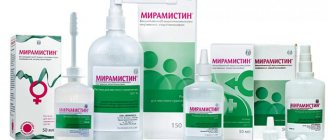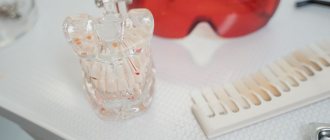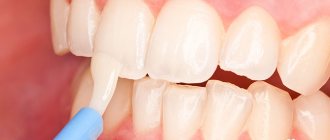12/21/2021
121 740
11 minutes
Co-author, editor and medical expert – Maksimov Alexander Alekseevich.
Hydrogen peroxide was discovered in 1818 by L.Zh.Thenar. Chemical designation H2O2. The substance itself is an almost colorless (pale blue) viscous substance. Hydrogen peroxide without impurities is an unstable substance; it has the ability to decompose to water and oxygen, releasing a large amount of heat. Unlimitedly soluble in water, alcohols and ethers. There is a 31% solution on sale called “Perhydrol”. Due to its oxidizing properties, hydrogen peroxide acts as an antiseptic. For medical use, a 3% H2O22 solution is used.
When peroxide gets on biological substrates (damaged mucous membranes, microbes), active oxygen is released, which destroys cell membranes, thereby providing an antiseptic effect and cleansing the oropharyngeal mucosa from pathogens and cellular detritus. It also has hemostatic properties1.
Up to contents
How to treat wounds with hydrogen peroxide
First of all, hydrogen peroxide is valued for its therapeutic effect. It is often used to treat wounds. The solution can be applied to small wounds, which will remove dead tissue, prevent the spread of germs and stop bleeding. In this case, peroxide can be used once. With frequent use, you can stop the spread of beneficial bacteria involved in healing wounds.
For infectious acne, the solution can be used to treat the affected areas, which will speed up the healing process.
Instructions for use of hydrogen peroxide
Hydrogen peroxide is a colorless, odorless liquid. Used as a disinfectant. The chemical basis of the drug - hydrogen peroxide - is an antioxidant. Upon contact with the skin, it releases active oxygen, due to which the harmful environment is destroyed and wounds are cleaned.
You can buy hydrogen peroxide at a 3% concentration at the pharmacy. There are also more concentrated forms of release - 6 and 37%.
Examples of using hydrogen peroxide for disinfection:
- A weak 3% solution is used to wash abrasions and incised wounds. This gentle solution will not harm the skin, but also does not have strong disinfectant properties against the COVID-19 virus.
- A 6% antiseptic solution is used as a disinfectant for treating surfaces, rooms, plumbing fixtures, etc. This drug has a pronounced irritating effect on the skin, so it should only be used with gloves.
- 37% peroxide, or perhydrol, is a highly concentrated, quite dangerous compound that requires mandatory dilution. You can buy it at hardware stores.
Prices for disinfection with hydrogen peroxide are budgetary - 100 ml of a 3% solution costs from 8 rubles, a 10 liter canister of 37% perhydrol will cost 1,500 rubles.
Disinfection methods
For external use to disinfect hands, skin and mucous membranes, a solution with an active substance concentration of 1–3% is used.
Disinfection methods:
- irrigation;
- rinsing;
- wiping with a cotton swab.
To disinfect rooms and objects, a 6% solution of hydrogen peroxide with the addition of detergents is used.
For everyday hand disinfection, you can prepare a more gentle solution of alcohol, glycerin and hydrogen peroxide.
Preparation of solutions
If you need to prepare a working solution of peroxide, you should use an enamel or glass container. The water temperature can be from 20 to 55 °C.
How to prepare a working solution for disinfection - table:
| %, concentration | 6% peroxide (ml) | Water (ml) |
| 0,5 % | 100 | 1100 |
| 3 % | 300 | 300 |
| 4 % | 800 | 400 |
| 5 % | 500 | 100 |
How to dilute hydrogen peroxide for hand treatment - a recipe for preparing an antiseptic with glycerin:
- ethyl alcohol 96% - 833 ml;
- hydrogen peroxide 3%—41.7 ml;
- glycerin - 14.5 ml;
- boiled water.
The components are mixed, poured into a container with a spray bottle, and left for 3 days. Exposure time for disinfection is 30 seconds.
Precautionary measures
Hydrogen peroxide is low-hazard - if it comes into contact with the skin, it does not have a toxic effect, therefore it is included in the 4th hazard class substances. However, with prolonged exposure, irritation occurs on the skin, so it is better to work with the product with gloves.
It is not recommended to use the disinfectant for pregnant women and patients with pulmonary diseases.
If hydrogen peroxide comes into contact with metal parts, corrosion may occur. Glass, plastic, and wooden products are indicated for disinfection.
Storing hydrogen peroxide
Unopened or carefully closed disinfectant retains its properties for 2 years. The storage place should be cool, dark, inaccessible to children, disabled persons, and pets. The ready-made working solution for disinfection does not lose its properties during the day.
How to dye your hair with hydrogen peroxide
You can dye your hair with the solution. It is especially good at covering regrown dark roots on bleached hair. It is necessary to blot the roots with the solution and leave for 30 minutes, then rinse well under warm water.
The product is also effective for gradual lightening with oxen. To do this, you will need to take equal amounts of water and hydrogen peroxide and add them to the sprayer. Then you need to spray the solution onto the strands and distribute evenly with a comb. Wait until completely absorbed. If you periodically carry out such manipulations, you will notice how the strands begin to lighten.
Disinfection with hydrogen peroxide
According to the Centers for Disease Control and Prevention, hydrogen peroxide kills fungi, bacteria, viruses and mold spores. It is a stable and effective antiseptic against viruses when used on hard, non-porous surfaces. Hydrogen peroxide (H2O2) is a powerful disinfectant that kills bacteria such as staph
, and
viruses
, including
H1N1
,
SARS
and
coronaviruses
.
This is because hydrogen peroxide in fully concentrated form is too strong for home use and is actually used as rocket fuel and a bleaching and corrosive agent in manufacturing.
Hydrogen peroxide (H2O2) is a highly reactive substance and acts on microbes by oxidation. This process occurs when reactive oxygen atoms interact with the electrons of other cells, resulting in the destruction of the cell walls that form the bacteria.
To get a 6% solution, you need to dilute the peroxide with water in a ratio of 1/6. To get 500 ml of a six percent solution you need to wear gloves, take a 500 ml container and a funnel. Take 75 ml of 37% peroxide, pour it into a container and add 387 ml of water so that the total volume is 462 ml. (75 ml of peroxide multiplied by 5.17 = 387.75 ml of water) therefore 387.75 + 75 = 462.75 ml of a six percent solution. Next, pour it into a spray bottle and we can begin to disinfect
Is it possible to put hydrogen peroxide in your ears?
Drops are effective in the presence of an ear infection, as well as in cases of blockage in the ear. But if you have such problems, you should not rely on hydrogen peroxide alone, but you need to inform a specialist about this, otherwise the problem may only worsen.
Earwax is not an infection, but it can cause blockages. In this case, you can use a couple of drops of hydrogen peroxide and olive oil. Instill the resulting solution into the ears. After the procedure, you can rinse your ears a little under warm water.
Some people claim that if you drop 2-3 drops of the solution into your ears, it will help get rid of flu germs and viral diseases.
Advantages and disadvantages of purifying pool water with peroxide
Pros:
- Cheap - unlike most modern cleaning products and special systems, peroxide is inexpensive.
- The liquid has no color and no such strong odor as, for example, the no less common chlorine.
- Peroxide not only purifies the water, but also makes it transparent, removing the unpleasant greenish tint.
- The use of peroxide does not affect the change in PH (acid-base balance) of water.
- Cleaning a pool with hydrogen peroxide does not require the presence of a specialist.
- If the dosage and recommendations for use are followed, the product does not harm human health.
- The result lasts from one to two months.
Minuses:
- Efficiency decreases for water whose temperature exceeds 27-28°C
- . To avoid constant exposure to hydrogen peroxide on the skin (especially sensitive and prone to allergic reactions), alternate cleansing methods.
- Repeated cleaning of the pool with hydrogen peroxide will be required after 1-2 months (depending on the degree of water contamination).
Is it possible to brush your teeth with baking soda and hydrogen peroxide?
Hydrogen peroxide is used to whiten teeth. To do this, you need to rinse your mouth with the product for 20-30 seconds and then spit it out.
You can make toothpaste using hydrogen peroxide at home. To do this, you need to mix it with baking soda.
Regularly performing such procedures will make your teeth whiter. In addition, toothpaste based on soda and peroxide helps combat bad breath.
Precautionary measures
Hydrogen peroxide has many beneficial cleaning and disinfecting properties on its own. However, you need to be careful when mixing it with other substances. For example, you should not mix hydrogen peroxide with bleach, or hydrogen peroxide with white vinegar, in the same container because such mixtures can cause undesirable effects. However, you can wipe down the surface with hydrogen peroxide first and then vinegar (not mixing!) as a powerful way to combat bacteria and viruses on hard surfaces.
Return to catalog
How to remove stains with a solution
Hydrogen peroxide is actively used by housewives in everyday life. It helps remove any stains from countertops, tiles and other surfaces in the house. This will not only clean the house, but will also prevent the appearance and proliferation of harmful microbes.
Peroxide will help get rid of limestone deposits. To do this, you need to spray the solution onto the desired area, leave it for 2-3 hours, and then wash it off with a sponge and soap.
A lot of dirt collects on the tiles and stains appear, which are very difficult to remove over time. Peroxide will remove mold and refresh the appearance of the tiles. To do this, you need to mix the product with flour so that the consistency resembles a paste. Treat the ceramic surface with the resulting solution and leave overnight. Wash the surface in the morning, after which all dirt will disappear.
Consequences of using a highly concentrated composition
As mentioned above, peroxide breaks down into oxygen and water. It is also not expensive and does not have an unpleasant odor.
But, if you do not follow clear recommendations for use as a pool cleaner, perhydrol will provoke the following:
- dry skin;
- at increased concentrations – a painful burn;
- if water gets into the mouth and then the stomach, the person will suffer from irritation of the mucous membrane;
- loss of natural hair color.
However, peroxide cannot be called a strong disinfectant. In order to effectively destroy reproducing microorganisms in water, the concentration must be at least 200-300 grams per 1 m3 . This amount of perhydrol is considered harmful to humans.
Contraindications and overdose
Taking hydrogen peroxide orally is prohibited under the following conditions:
- diabetes;
- ulcer or gastritis;
- pancreatitis;
- during transplantation;
- period of bearing a child;
- lactation period;
- children and teenagers.
Some people, without thinking about the possible consequences, take the solution in unlimited quantities.
In case of overdose, the following conditions and reactions of the body may be observed:
- burn of the mucous membrane of the intestines and stomach;
- blockage of blood vessels;
- vomiting and nausea;
- internal hemorrhage;
- general poisoning;
- allergic reaction in the form of skin rashes or runny nose;
- drowsiness and lethargy;
- burning sensation in the stomach area.
Instructions for use
Disinfection with perhydrol is usually chosen by owners of small bowls with a volume of up to 85 cubic meters. Basic rules that must be followed to successfully complete the job:
- Purchase cleaning agents only in specialized stores from trusted sellers. Inspect the packaging before purchasing. The container must be hermetically sealed and supported by a certificate, label or instruction indicating the date of manufacture, expiration date, methods of use, manufacturer's name, batch number and compliance with the standard or GOST.
- Before you begin, be sure to clean the tank of debris from the surface and of deposits from the walls.
- Prepare rubber gloves and goggles to minimize the likelihood of droplets of a chemical compound getting on your mucous membranes.
- When purifying pool water with hydrogen peroxide at any dosage, it is prohibited to cover the bowl with something so as not to interfere with the free release of oxygen.
- The composition must be filled using a pump in filtration mode. In this case, the water intake tube is lowered into a prepared container with working fluid. If you don’t have a pump, take a watering can and use it to distribute the product at different ends of the container.
- Be sure to inform all family members and guests that swimming is prohibited for a certain period.
How does peroxide affect the human body?
According to the professor, the healing properties of H2O2 (hydrogen peroxide) are unique. The drug restores the balance between the bioenergy field and the physiological state of a person, treats diseases of internal organs.
Benefits of hydrogen peroxide for the human body:
- improves metabolic processes at the cellular level;
- is an antioxidant, removes free radicals from the body, prevents the development of strokes, heart attacks, oncology and many other internal diseases;
- regulates the functioning of the glands, especially the thyroid and adrenal glands, promotes normal hormone production;
- equalizes blood insulin levels in patients with diabetes;
- increases the amount of oxygen in the body, ensures the transport of trace elements to the brain;
- normalizes the functioning of the gastrointestinal tract;
- dilates blood vessels, lowers blood pressure;
- improves brain activity;
- removes toxins from the body, prevents the proliferation of pathogenic microbes (bacteria, fungi);
- restores water-alkaline balance;
- accelerates tissue regeneration, promotes rejuvenation.
Such a broad effect is due to the fact that the drug supplies the body with additional oxygen, improving all physiological processes.
Dihydrogen dioxide: features
The foreign name, which can most often be found on packages in stores, sounds like Hydrogen peroxide; the formulations Dioxidane and Dihydrogen dioxide are also common. In Russian, synonyms are used - hydroperite (if we are talking about tablets or capsules) or perhydrol. This substance is easily soluble in water, alcohol, ether and a number of other liquids. The compound has equally oxidizing and reducing properties: oxidizing nitrites and nitrates, releasing iodines and breaking down proteins, reducing manganese, gold and silver salts. This is precisely the reason for the use of hydrogen peroxide for pools with shallow, small-volume tanks. Once in the environment, it quickly decomposes, which ensures its relative safety, and is also stored for a long time without losing its properties. The substance is widely used in industry, agriculture, medicine and in everyday life. For reservoirs it is used as an effective, powerful disinfectant, bleaching, bactericidal agent with instant action.
Recommendations for using peroxide
Hydrogen peroxide for a runny nose is very effective and helps to quickly cope with the disease. But for this you need to adhere to a number of recommendations:
- It is advisable to first remove the mucus that has accumulated in the nose . To do this, blow the snot into a napkin. Otherwise, the drug will not work properly.
- Rinsing or instillation is best done shortly before bedtime. After all, the medicine may still flow out of the nostrils for some time, but this does not happen in a lying position.
- You cannot go outside or sit in a cold room after the manipulations. This can cause hypothermia, which can lead to serious consequences.
- For instillation, use a solution at body temperature. This way the effect of the procedure will be even more pronounced.
Thus, hydrogen peroxide is an inexpensive but very effective drug. It can be used both for treating the skin and for treating other diseases. The drug has a rapid effect during the treatment of ENT diseases. But before using the drug, it is recommended to consult a doctor, since in isolated cases the medicine can be dangerous .
Answers to the most frequently asked questions
1. What is the frequency of preventive cleanings?
If all calculations were performed correctly and the result is satisfactory, the next cleansing is carried out no earlier than 30 days later.
2. Is it better to use peroxide or chlorine?
Chlorine is the most well-known disinfectant and can quickly destroy most types of bacteria. It is recommended for cleaning swimming pools in almost all sanitary organizations. Hydroperite is a stronger and more effective drug if it is necessary to remove any traces of organic matter, sweat or urine, etc. It does not disinfect as well as chlorine, but it can cope with a small bowl volume. Among its advantages is the absence of odor and influence on pH. The correct answer is: alternate the substance.
3. If there is still liquid left in the container after use, will the opened container lose its properties and the shelf life will be reduced?
No. The concentration decreases very slightly, no more than 0.5% in 30 days.
4. Should peroxide be poured into the reservoir as soon as it is filled with water, or should it wait until it becomes dirty and cloudy?
You can use the drug at the first manifestations of turbidity, but it is better to fill it right away, as a preventive measure - there is no difference.
AMETHYST - 02 M up to 2 cubic meters/day.
Aeration unit AS-1054 VO-90
Main table dispenser AquaPro 919H/RO (hot and cold water)
5. If the water mass is heavily polluted, like a swamp, is it worth using the composition?
Yes, but please note that the disinfection period will be longer than usual.
6. What to do if H2O does not become transparent after the events?
There may be several reasons: incorrect dosage, not enough time has passed, there are many impurities of lime and chlorine inside. The liquid should be purchased only from trusted manufacturers, so as not to purchase a fake that will be ineffective.
7. If a certain amount of new water is added to the pool, is it necessary to add hydroperite again?
Preferably as a preventive measure.
8. If a reservoir is chlorinated, after what period is perhydrol added?
Usually no earlier than 5-7 days.
9. If salty liquid is poured into the bowl, is the use of peroxide effective?
No, in this case it is not recommended to use the product.
10. How does the solution affect children and animals. They may accidentally ingest H2O while swimming. Will it do any harm?
At a rate of 700 grams per 1000 liters, the percentage is 0.7 grams per 1 liter. These are the indicators immediately after use. Within a day the concentration decreases significantly. Therefore, it is not recommended to swim only during the action of the chemical compound. In the future, the water mass is safe.
11. After pouring the product inside, should the filter be turned on immediately or wait?
It is better to start it at the same time, since a suspension begins to form in the very first minutes. Keep it clean, as actively formed dirt can quickly clog it.
What type of perhydrol is best to use for a pool?
Experts recommend using the following types of substances: medical 30-40%, technical 60% grade “B” and 37% grade “A”. Naturally, the dosage of each type varies, so you must carefully study the instructions before use. It should be noted that a concentration of 60% is explosive and working with it requires certain skills and knowledge. If the liquid in the container is accidentally contaminated, a chain reaction is initiated, promoting decomposition into water and oxygen and, as a result, heating. Temperatures can rise to 1000 degrees. The released H2O suddenly turns into vapor, the volume of which is 7000 times greater than the original amount of the product. Accordingly, an explosion and breakthrough of the container occurs.
Treatment with hydrogen peroxide according to Neumyvakin
Thanks to the work and experiences of Dr. Neumyvakin, treatment with oral hydrogen peroxide has become understandable and accessible. A famous doctor, while researching hydroperite, experienced all the properties of this drug. Peroxide, according to the professor and his followers, fights cancer, removes accumulated fats from the walls of blood vessels, and treats leukemia. The drug should be taken daily, while the internal tissues will be saturated with oxygen. In addition, perhydrol helps:
- for joint disease;
- prevent atherosclerosis;
- for psoriasis;
- cope with fungal infections and viruses;
- improve the functioning of the immune system;
- for hypertension;
- fight influenza, colds, acute respiratory viral infections;
- prevent tumor growth;
- cope with diseases of the throat, nose, ears (15 drops of peroxide should be dripped into the painful area);
- for depression;
- relieve gum disease (20 drops of hydroperite should be mixed with ½ teaspoon of soda and 2 drops of lemon juice, mix everything and brush your teeth);
- with varicose veins.
According to Neumyvakin, hydrogen peroxide should be taken orally 3 times a day - one drop of a 3% solution should be dissolved in ¼ glass of water. Then you should add one drop daily, bringing the single dose to 10 drops. Then you need to take a short break (3 or 4 days), after resting, the peroxide solution should again be taken ten drops for 10 days. Then a break and everything again.
How to take orally
When hydrogen peroxide is used for the first time internally, intoxication of the body may occur - there is nothing wrong with this, it’s just that hydroperite is an active substance and, once in the body, it destroys bacteria. In addition, a good sign of the positive effect of peroxide on the body is the appearance of skin inflammation, through which toxic substances are removed from the body. Many people are often interested in the question of how to drink hydrogen peroxide correctly. There are certain rules for using hydroperite:
- to take peroxide, you should take a purified three percent solution;
- you need to start taking the drug with a small dose (2 drops) per 3 tbsp. l. water. Throughout the day, the procedure must be repeated 3 times. Next, the dose should be increased by one drop daily (the result should be 10 drops);
- the total amount of medicine should not be more than 30 drops;
- perhydrol should only be taken on an empty stomach, because the presence of food in it will increase the negative effects of the drug. At least 3 hours must pass after the last meal. In addition, after drinking drops of the drug, you must refrain from eating for at least 40 minutes;
- It is advisable to use the drug cyclically. After 10 days of use, a three-day break is taken. Subsequent cycles can be started immediately with 10 drops.
Contraindications
There are no special contraindications to taking hydroperite; you just need to correctly determine the dosage so as not to harm the body. The drug can be taken in parallel with other various herbal medicines.
It is unacceptable to use antibiotics simultaneously with peroxide. More than 30 minutes should pass between these treatments. Doctors do not advise resorting to peroxide treatment for people who have transplanted organs, as complications with tissue incompatibility are possible. In addition, natural contraindications are:
- serious damage to the mucous membrane of the stomach, larynx, and intestines;
- individual intolerance to the drug;
- Breastfeeding and pregnancy.











